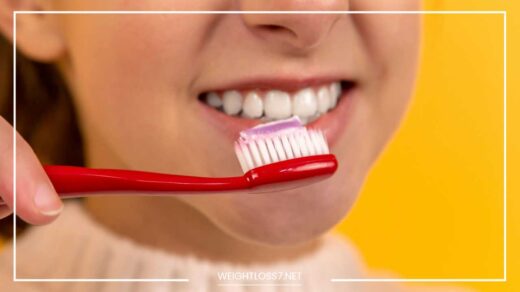Eating Disorders Into Adulthood

Eating Disorders
Eating Disorders Into Adulthood: You Are Not Alone (An In-Depth Exploration)
Eating disorders often cast a long shadow, and the misconception that they’re solely a teenage struggle persists. The reality is far more complex.
Many individuals carry the weight of an eating disorder well into adulthood, facing unique challenges and requiring ongoing support.
This comprehensive guide delves into eating disorders in adults, exploring their prevalence, signs and symptoms, and the specific hurdles faced by adults in recovery. It also offers valuable resources and a beacon of hope – recovery is achievable, at any stage of life.
Beyond the Fading Spotlight: The Persistence of Eating Disorders
While the onset of some eating disorders may occur in adolescence, research suggests a significant portion (up to 50%) begin in adulthood. Additionally, many individuals who develop eating disorders in their teens continue to battle them throughout their lives.
It’s crucial to dispel the myth that eating disorders are simply about vanity or weight control. In essence, they are severe mental illnesses with potentially life-threatening medical consequences.
These illnesses are characterized by a distorted body image, a fixation on food and weight, and unhealthy eating habits.
The most common types of eating disorders include:
- Anorexia Nervosa: Characterized by severe weight restriction, intense fear of weight gain, and a distorted body image that leads individuals to see themselves as overweight even when they are dangerously underweight.
- Bulimia Nervosa: Characterized by recurrent cycles of binge eating followed by purging behaviors (vomiting, laxative abuse) to prevent weight gain. This cycle can have devastating physical and emotional consequences.
- Binge-Eating Disorder: Characterized by recurrent episodes of uncontrolled eating in a short period, often accompanied by feelings of loss of control and shame. Unlike bulimia, there are no purging behaviors associated with binge-eating disorder.
These are just the most well-known eating disorders, and the reality is that they can manifest in various ways.
Unveiling the Mask: Signs and Symptoms in Adults
Eating disorders in adults can be particularly challenging to identify, as the signs and symptoms may differ from those seen in adolescents. Here are some key indicators to be aware of:
- Fluctuations in weight: Unexplained weight loss or gain can be a red flag. However, weight changes may be less dramatic in adults with eating disorders compared to adolescents.
- Shifts in eating habits: Skipping meals, eating very little or very quickly, secretive eating behaviors, or a preoccupation with specific food groups or restrictive dietary patterns.
- Obsessive focus on food and weight: Constantly talking about calories, weight, or body image, expressing a distorted view of oneself in the mirror, and social withdrawal due to anxieties about eating in public.
- Disrupted emotional landscape: Increased anxiety, depression, low self-esteem, irritability, and social isolation.
- Physical health concerns: Fatigue, hair loss, digestive problems, irregular menstrual cycles, and weakened immune system due to malnutrition.
If you recognize these signs in yourself or someone you care about, it’s crucial to seek professional help without delay. Early intervention can significantly improve the chances of a full recovery.
The Weight of Responsibility: Challenges Faced by Adults in Recovery
Adults with eating disorders face a unique set of challenges that can make recovery more complex. Some of the key factors that can hinder progress include:
- Stigma and Shame: The persistent misconception that eating disorders are a teenage issue can lead to feelings of isolation and shame for adults struggling with them. This stigma can be a significant barrier to seeking help.
- Competing Demands of Adulthood: Adults often juggle work, family, finances, and other responsibilities, making it difficult to prioritize treatment and self-care. Balancing these demands can be overwhelming and make it challenging to dedicate time and energy to recovery.
- Financial Constraints: Treatment for eating disorders, including therapy, nutritional counseling, and potential hospitalization, can be expensive. Adults may have limited access to health insurance compared to adolescents, creating a financial barrier to seeking proper care.
- Co-occurring Conditions: Eating disorders often co-occur with other mental health issues like depression, anxiety, or substance abuse. This can complicate treatment and require a multi-faceted approach to address all underlying issues.
These challenges can be daunting, but they shouldn’t deter you from seeking help. Remember, there are numerous resources and treatment options available specifically designed to support adults with eating disorders.
The Path to Wholeness: Resources and Strategies for Recovery
Eating disorder recovery is a marathon, not a sprint. It requires time, dedication, and the right support system. Here are some valuable resources to empower you on your journey:
Here are some practical strategies to integrate into your recovery plan:
- Find a Qualified Therapist: Seek a therapist specializing in eating disorders. Therapists with expertise in modalities like Cognitive Behavioral Therapy (CBT) can be particularly helpful in addressing the underlying thoughts and behaviors associated with the eating disorder.
- Build a Strong Support Network: Surround yourself with supportive friends, family members, and treatment professionals who understand your struggles and can offer encouragement and accountability. Consider joining online or in-person support groups specifically for adults with eating disorders.
- Prioritize Self-Care: Eating disorder recovery requires a holistic approach that addresses both your physical and mental well-being. Here are some self-care practices to incorporate:
- Develop a Healthy Relationship with Food: Work with a registered dietitian to develop a personalized meal plan that nourishes your body and promotes balanced eating.
- Engage in Regular Exercise: Physical activity can improve mood, reduce stress, and promote body positivity. Choose activities you enjoy, focusing on how exercise makes you feel rather than burning calories.
- Practice Relaxation Techniques: Techniques like mindfulness meditation, yoga, and deep breathing can help manage stress and anxiety, common triggers for eating disorder behaviors.
- Get Enough Sleep: Aim for 7-8 hours of quality sleep each night. Adequate sleep is crucial for physical and mental health, and disrupted sleep patterns can worsen eating disorder symptoms.
- Practice Self-Compassion: Recovery is a journey with setbacks. Be kind to yourself, celebrate small victories, and don’t give up when faced with challenges.
Remember:
- You are not alone. Millions of adults are battling eating disorders, and there is hope for recovery.
- Recovery takes time and effort. Be patient with yourself and celebrate your progress, no matter how small.
- Seeking help is a sign of strength, not weakness.
- With the right support system and a commitment to self-care, you can overcome this challenge and live a healthy, fulfilling life.
Beyond Individual Recovery: Advocating for Change
Eating disorders are complex issues with societal roots. Here are some ways you can advocate for change and create a more supportive environment for adults with eating disorders:
- Educate Yourself and Others: Help to dispel myths and raise awareness about eating disorders. Share reliable information from reputable sources to combat the stigma surrounding adult eating disorders.
- Support Legislative Efforts: Advocate for policies that promote access to affordable eating disorder treatment for adults.
- Challenge Body Image Ideals: Be mindful of the messages you consume and create. Promote body positivity and celebrate diversity in all shapes and sizes.
By taking these steps, we can create a world where eating disorders are met with understanding and support, and recovery is achievable for all.
Additional Considerations:
- This guide is intended for informational purposes only and should not be a substitute for professional medical advice. If you suspect you or someone you know has an eating disorder, consult a healthcare professional or a qualified therapist for diagnosis and treatment.
- There are various treatment approaches for eating disorders. The best approach will be determined by the specific needs of the individual.
- There are hotlines available to provide immediate support and resources for people struggling with eating disorders. You can find a list of hotlines by visiting the websites of the organizations mentioned earlier.
Remember, recovery is possible. With the right tools and support, you can overcome an eating disorder and live a life free from its grip. You are not alone on this journey.
Beyond the Binary: Exploring the Spectrum of Eating Disorders in Adults
While this guide has focused on the three most common eating disorders (Anorexia Nervosa, Bulimia Nervosa, and Binge-Eating Disorder), it’s important to acknowledge that eating disorders can manifest in a variety of ways. Here’s a deeper dive into the complexities of the eating disorder spectrum in adults:
- Atypical Anorexia: Individuals with atypical anorexia meet the core criteria of anorexia (restriction and fear of weight gain) but have a weight within or above the “normal” range for their height. This can make it difficult to diagnose and highlights the limitations of solely relying on weight as a diagnostic tool.
- Other Specified Feeding or Eating Disorder (OSFED): This category encompasses eating disorders that don’t meet the full criteria for the established diagnoses. It can include symptoms of various eating disorders or a combination of them.
- Purging Disorder: Characterized by recurrent purging behaviors (vomiting, laxative abuse) in the absence of binge eating.
- Night Eating Syndrome: Characterized by recurrent episodes of eating large amounts of food after dinner or during the night, often accompanied by insomnia and morning feelings of not having eaten enough.
- Muscle Dysmorphia: A body image disorder where individuals become obsessed with the idea that they are not muscular enough, even when they are. This can lead to excessive exercise and restrictive eating patterns.
Understanding the spectrum of eating disorders is crucial for adults seeking help. It allows for a more nuanced diagnosis and ensures individuals receive the most appropriate treatment plan.
The Intersection of Identity: Eating Disorders and Diverse Populations
Eating disorders can affect anyone, regardless of age, gender, race, ethnicity, sexual orientation, or socioeconomic background.
However, certain populations may face increased risk factors or experience unique challenges in recovery. Here are some considerations:
- Men and Boys with Eating Disorders: Eating disorders are often stereotyped as a female issue, leading to underdiagnosis in men and boys. Men may exhibit different symptoms, such as a focus on muscle building rather than weight loss.
- LGBTQ+ Individuals: Members of the LGBTQ+ community may face higher rates of eating disorders due to societal pressures around body image and weight stigma. Discrimination and lack of access to affirming healthcare can further complicate their experience.
- Athletes: Athletes in sports with a strong emphasis on appearance or weight control may be at increased risk for developing eating disorders. The pressure to maintain a certain physique can lead to unhealthy eating habits and disordered relationships with food and exercise.
- Culturally Diverse Populations: Cultural attitudes towards food, weight, and body image can influence an individual’s susceptibility to eating disorders. It’s important for treatment providers to be culturally sensitive and understand the specific challenges faced by diverse populations.
Remember:
- Eating disorders do not discriminate. If you are concerned about yourself or someone you know, seek help regardless of your background.
- There are resources and treatment options available that cater to the specific needs of diverse populations.
A Life Beyond the Eating Disorder: Embracing Recovery and Personal Growth
Recovery from an eating disorder is not simply about restoring a healthy weight or eliminating unhealthy behaviors. It’s a journey of self-discovery, healing, and personal growth. Here are some ways to redefine your life beyond the eating disorder:
- Reclaim Your Passions: What activities and hobbies brought you joy before the eating disorder took hold? Rediscover your passions and interests, and use them to build a fulfilling life outside of the illness.
- Practice Body Neutrality: Shift your focus from body image to body appreciation. Learn to appreciate your body for its strength and capabilities, rather than focusing on its appearance.
- Develop Healthy Coping Mechanisms: Identify healthy ways to manage stress, anxiety, and difficult emotions. Explore techniques such as mindfulness meditation, journaling, or spending time in nature.
- Build Meaningful Relationships: Nurture your relationships with supportive friends and family members. Surround yourself with people who value you for who you are inside and out.
- Set Goals and Pursue Your Dreams: Don’t let your eating disorder hold you back from achieving your goals. Set meaningful goals for yourself and take steps to pursue your dreams, big or small.
Remember, recovery is a lifelong process. There will be challenges along the way, but with continued support and self-compassion, you can build a life of resilience, joy, and overall well-being.
This comprehensive guide has explored the complexities of eating disorders in adults. By raising awareness, promoting understanding, and advocating for change, we can create a world where adults struggling with eating disorders feel empowered to seek help and embrace a healthy, fulfilling life.

















